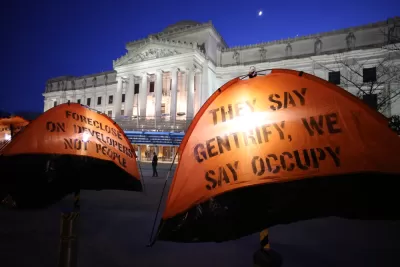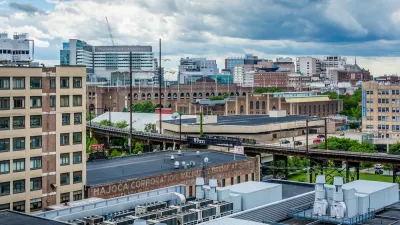Whether gentrification is common depends on how one defines it.

Much of the discussion of gentrification focuses not on whether gentrification is a good thing, but over its frequency. The answer is: it depends on how you define it.
If you define gentrification as any increase in neighborhood gentrification or affluence, gentrification is widespread. On the other hand, if you define gentrification as radical change (especially radical citywide change) gentrification is quite rare.
One example of the former definition is Governing magazine's study, which found that "Nearly 20 percent of neighborhoods with lower incomes and home values have experienced gentrification since 2000, compared to only 9 percent during the 1990s."
According to this study, a census tract is "gentrified" when its percentage of college graduates and home values increase to a significantly greater extent than the metro area average—in particular, enough so that the tract's level of increase (as opposed to its absolute percentage of college graduates or its absolute home value) was in the top 1/3 of metro area Census tracts.
This means that a very, very poor neighborhood that improves significantly is "gentrified" even if it is still a poor neighborhood by any conceivable criterion. For example, Governing described one Census tract on the east side of Kansas City as "gentrified" because the percentage of college-educated residents increased from 8 percent to the still-low level of 14 percent, and because home values increased by 40 percent over a decade. (If you want to get a sense of this area, go on Google Street View to 4200 E. Truman Road and adjoining blocks.)
On the other hand, Lester Rice of Rice University recently wrote that gentrification in Houston is quite rare. He defines gentrification as a significant racial transition—essentially, when a formerly majority-minority area becomes majority-white. By this very narrow definition, a neighborhood does not gentrify when it goes from working-class white to upper-class white, or from working-class black to upper-class black.
Another factor dividing commentators is whether to ignore "de-gentrification"—that is to say, neighborhoods that become poorer over time. If you focus solely on neighborhoods that become richer, you are likely to emphasize the growth of gentrification. On the other hand, if you weigh gentrifying areas against the number of areas that have become poorer, you may see gentrification as very minor indeed.
For example, the City Observatory blog emphasizes that over the past several decades, de-gentrifying areas have been far more common than gentrifying areas. In Chicago, only seven or eight Census tracts (mostly near downtown) rebounded from having high poverty to low poverty, while dozens of neighborhoods deteriorated. Similarly, my earlier work has de-emphasized gentrification because I was focusing on citywide poverty.
In sum, whether gentrification is a big deal depends on what questions you are asking. Gentrification will seem quite minor if the question you are asking is: "Have cities become playgrounds for the rich (or at least caught up with their suburbs economically)?" That's because, in fact, even the richest central cities are poorer than their suburbs. But you will find quite a bit more gentrification if the question you are more interested is: "Have any city neighborhoods, anywhere, become richer or better educated?"

Manufactured Crisis: Losing the Nation’s Largest Source of Unsubsidized Affordable Housing
Manufactured housing communities have long been an affordable housing option for millions of people living in the U.S., but that affordability is disappearing rapidly. How did we get here?

Americans May Be Stuck — But Why?
Americans are moving a lot less than they once did, and that is a problem. While Yoni Applebaum, in his highly-publicized article Stuck, gets the reasons badly wrong, it's still important to ask: why are we moving so much less than before?

Research Shows More Roads = More Driving
A national study shows, once again, that increasing road supply induces additional vehicle travel, particularly over the long run.

Gary, Indiana to Expand Transit Service, Bike Share
The city plans to launch a bike share system in April and expand service on its bus routes.

Pittsburgh Rolls Out Electric School Buses
Pittsburgh Public Schools has launched its first electric school buses, with plans to fully electrify its fleet over the next 14 months, aiming to create a cleaner, more sustainable transportation system supported by new charging infrastructure.

Concrete to Community: A Schoolyard Makeover in West Philly
With guidance from the Trust for Public Land, third graders at Overbrook Elementary are leading the redesign of their asphalt schoolyard into a vibrant green space, learning valuable skills and creating lasting community impact in the process.
Urban Design for Planners 1: Software Tools
This six-course series explores essential urban design concepts using open source software and equips planners with the tools they need to participate fully in the urban design process.
Planning for Universal Design
Learn the tools for implementing Universal Design in planning regulations.
City of Moreno Valley
Institute for Housing and Urban Development Studies (IHS)
City of Grandview
Harvard GSD Executive Education
NYU Wagner Graduate School of Public Service
City of Cambridge, Maryland
Newport County Development Council: Connect Greater Newport






























